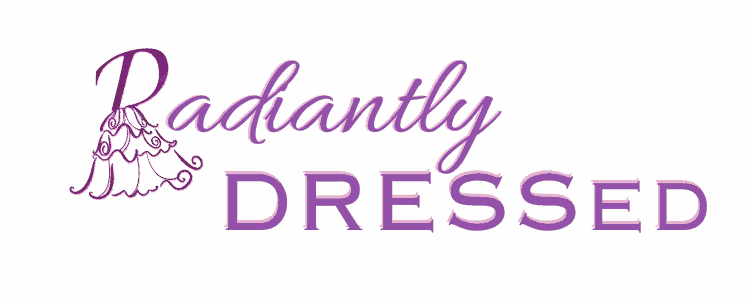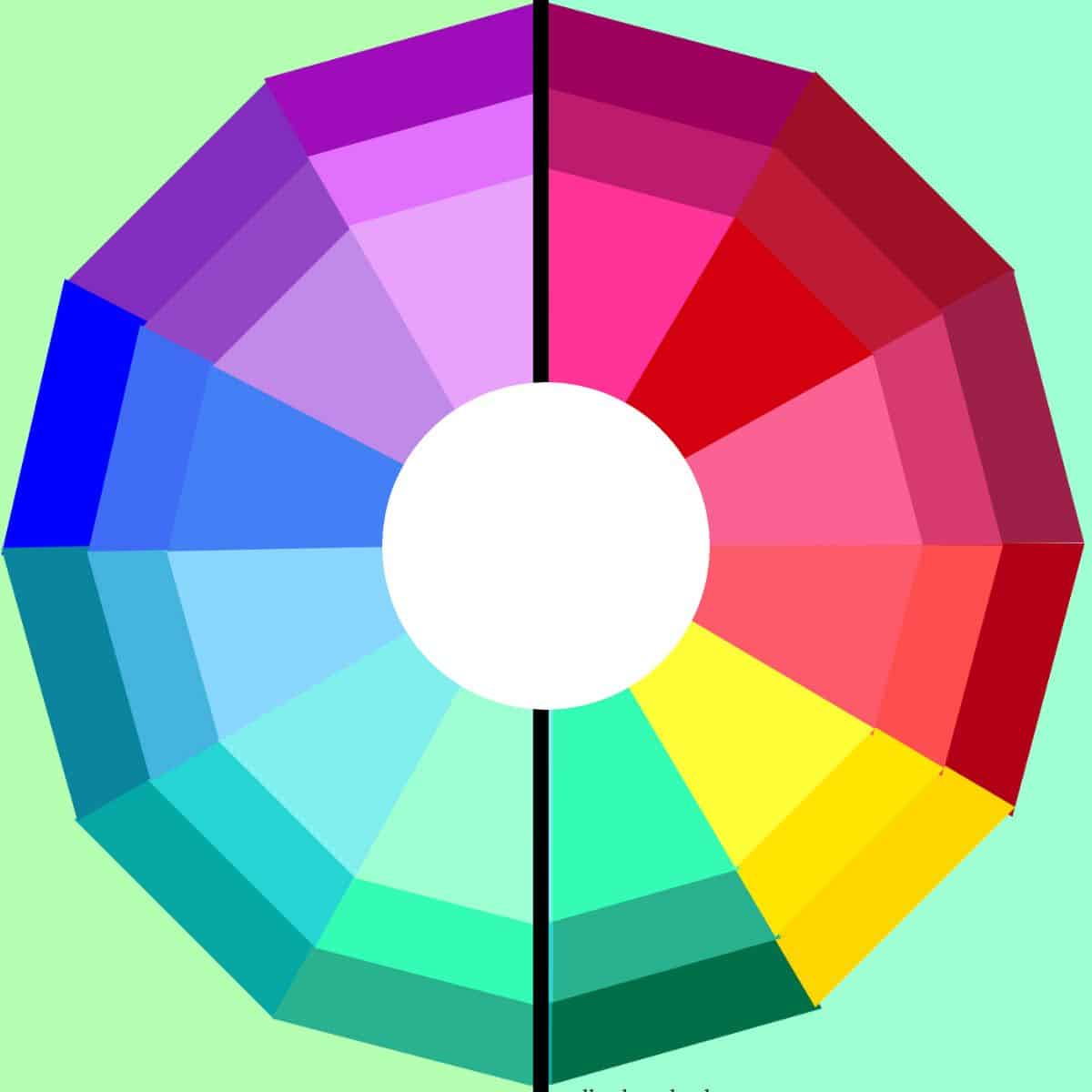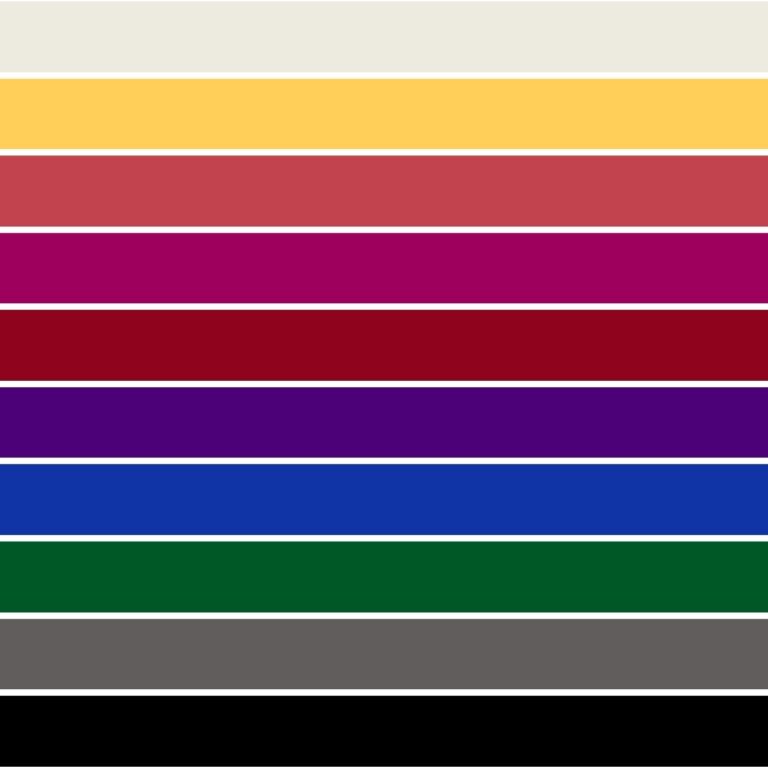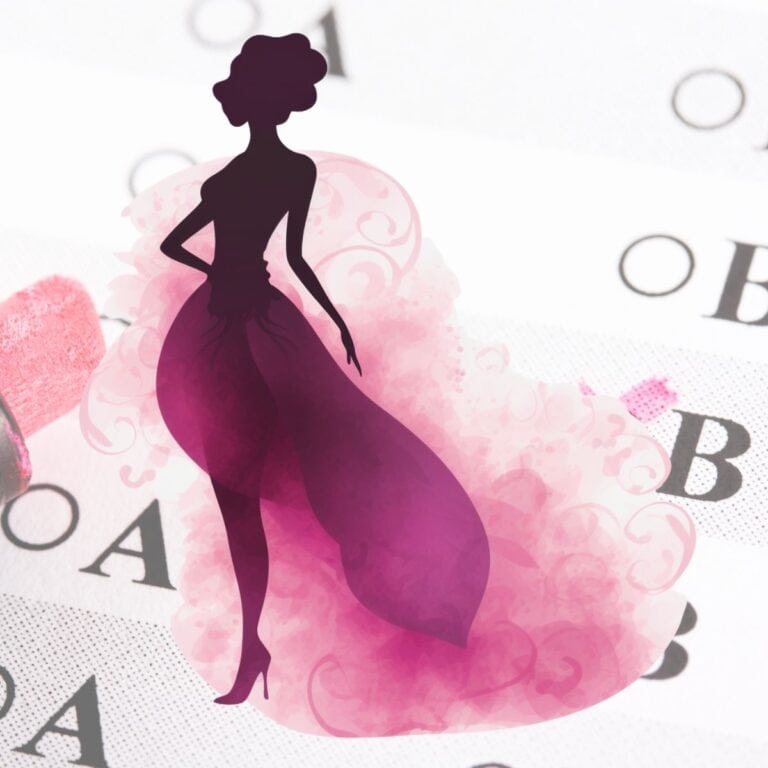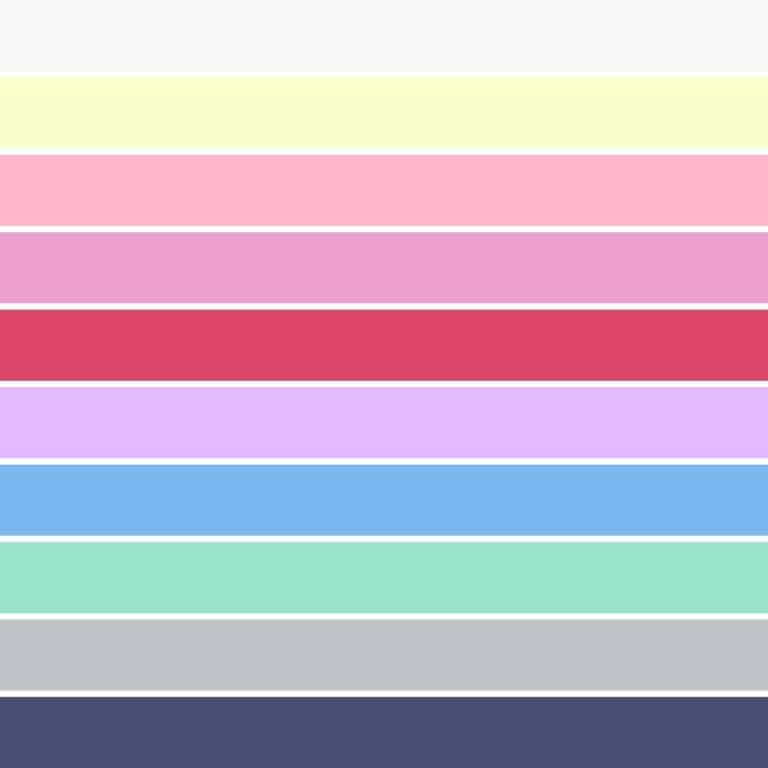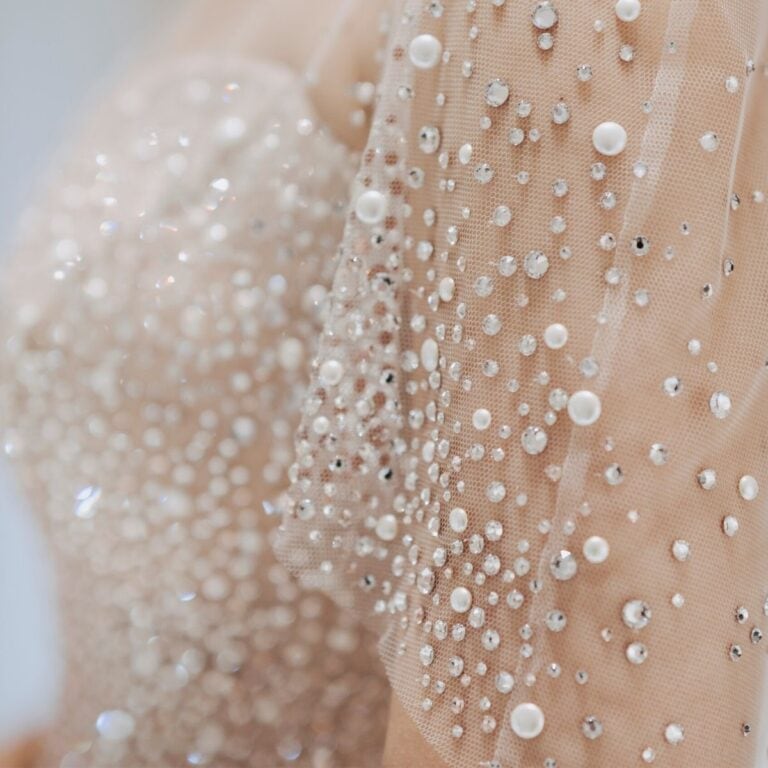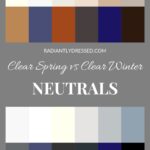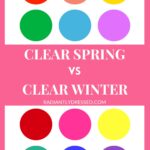If you’re stuck between clear spring and clear winter, try these 4 tricks to determine your color season.
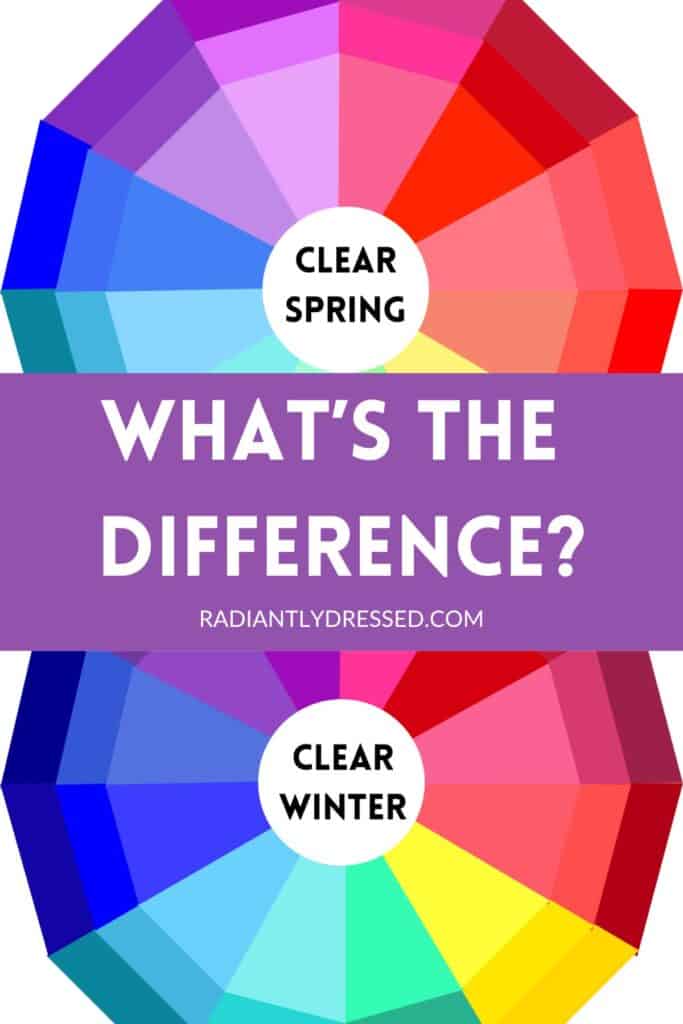
In the world of seasonal color analysis, you may discover that understanding the nuances between Clear Spring and Clear Winter can enhance your wardrobe and personal style. However, as mostly neutral seasons, it can be difficult to figure out which season suits you best.
Both these categories fall into a sophisticated system that analyzes the palette best suited for an individual based on their natural coloring. Clear Spring, with its warm undertones, resembles the freshness and brightness of springtime, merging seamlessly with some Winter attributes. Your Clear Spring profile means you can embrace vivid and warm hues that reflect your dynamic presence.
Conversely, as a Clear Winter, you exhibit the cool and contrasting elements of Winter, but with an added clarity that sets you apart from other Winter subtypes. Your palette includes colors that are bold, intense, yet decidedly cooler, mirroring the starkness and clarity of a winter landscape under a clear sky. Understanding your season can inform your choices, allowing you to select clothing and makeup that harmonizes with your natural coloration, creating a look that is both cohesive and vibrant.
Navigating between these two seasons relies on distinguishing their unique characteristics in terms of temperature, value, and chroma in color. Your Clear Spring palette will accommodate the luxury of black – a staple typically reserved for Winters – but it is the warmth behind the bright colors that signals your season.
Meanwhile, Clear Winter distinguishes itself with a color scheme that leans into cooler, darker shades, providing a different kind of intensity that resonates with your cool and clear features. Knowing which season you fall into can give you confidence in curating a wardrobe that not only looks great but feels inherently you.
Table of Contents
Understanding Color Seasons
In the realm of seasonal color analysis, each season embodies specific traits related to hue, value, and chroma that can align beautifully with your natural coloring.
When you distinguish between Clear Spring and Clear Winter, you can choose colors that effortlessly complement your look. This analysis evaluates your skin tone, eye, and hair color to determine your specific season. Each season corresponds to a palette of colors that naturally resonate with your inherent coloration.
Clear Spring characteristics include:
- Undertones: Warm to Neutral-Warm
- Hue: Primarily warm, bright hues with some neutral
- Best Colors: Kelly green, Tomato red, hot pink
Clear Winter traits are:
- Undertones: Neutral to cool
- Hue: Cool, bold striking colors
- Best Colors: Cobalt, Magenta
By understanding your color season, you can enhance your wardrobe and makeup choices, ensuring that they flatter your natural coloring. Remember, the best hues for you are those that reflect your inherent tones, creating a harmonious and balanced look.
Characteristics of Clear Spring
As you delve into the Clear Spring color palette, you’ll find its vibrant and luminous qualities that are both warm and invigorating.
Color Palette of Clear Spring
Your Clear Spring palette is characterized by a base of warmth coupled with vivid brightness. The colors in your palette are not only lively but also possess an inherent warmth that makes them appealing, perfect for a vibrant and energetic look.
- Primary Colors:
- Bold Pinks: Shocking Pink, Coral
- Golden Yellows: Sunshine, Honey
- Secondary Colors:
- Neutral Shades:
- Navy (look for warm undertones)
- Camel
- Ivory
Your Clear Spring colors are perfect for crafting harmonious looks that are lively yet not overwhelming, perfectly capturing the essence of a bright and sunny spring day.
Characteristics of Clear Winter
Clear Winter is noted for its striking cool boldness, with neutrality from sitting next to the spring seasons.
Color Palette of Clear Winter
Your Clear Winter color palette draws inspiration from the season’s vivid, intense hues, ranging from the deep purples of twilight to the stark blues of a winter night sky. Choose a mix of these colors to highlight your season, enhancing your natural elegance and sophistication.
- Primary Colors:
- Bold Blues: Cobalt and Sapphire
- Bright Pinks: Fuchsia and Magenta
- Secondary Colors:
- Purples: Violet and Plum
- Greens: Jade and Teal
- Neutral Shades:
- Black
- Navy
- Optic White
Remember, your best colors are bold and cool, reflecting the essence of a Clear Winter’s striking appearance.
How to Distinguish Light Spring vs Light Summer
Warm or Cool Undertone
The first aspect we’re examining is undertones, and to a lesser extent, overtones. In the realms of Clear Winter and Clear Spring, one leans towards cool, and the other towards warm. Clear Winter is the cooler season, characterized by its bold, intense tones, while Clear Spring is the warmer one, marked by its vibrant, luminous hues.
Many people assume they’re neutral and struggle to choose between the two. However, the truth is, everyone’s undertones are either cool or warm. It’s the overtones layered over these undertones that often cause confusion, making us think we’re cool when we’re actually warm, or vice versa.
I’ve got a simple trick to help determine your undertones: the pinch test. Just pinch the end of your finger, as if you were about to give blood, and observe the color it turns. It’ll be a shade of red—either a cool plummy purple or a warm orangey coral. Plummy purple indicates cool undertones, appropriate for Light Summer, while orangey coral suggests warm undertones, suitable for Light Spring. If you’re unsure, it’s safer to lean towards warm.
Once you’ve identified your undertone, let’s briefly consider overtones. Clear Winter individuals, with their cool blue undertone, often have a yellow overtone. This mix of blue and yellow often creates a olive complexion, leading many to believe they are warm.
On the other hand, Clear Spring people usually have a warm red undertone paired with a violet overtone, which is more common to Winter. The mix starts to head into cool red territory, causing confusion about winter versus spring.
Undertones are the primary determinant of season, and understanding yours can be pivotal in helping you discover if you are Clear Spring or Clear Winter.
Contrast and Intensity
When distinguishing between Clear Winter and Clear Spring, it’s essential to focus on value, as both seasons share a high contrast level. This commonality means that contrast alone cannot differentiate between the two. Your subtle distinction lies in the value, or the lightness or darkness of the colors you can wear most effectively.
As a Clear Winter, you shine best in bold, medium-value shades but have the versatility to embrace the darkest hues from the Deep Winter palette, looking exceptional in these tones. These ranges allow you to fluctuate between moderately intense and profoundly deep colors, suitable for a dramatic yet refined look.
Conversely, if you resonate more with Clear Spring, you thrive in bright primary colors, and your spectrum extends into lighter, vibrant shades like flamingo pink and seafoam green. Consider whether you feel more at ease in these lighter and brighter colors compared to deeper, darker shades. This introspection can help you understand your optimal palette, enhancing your natural vibrancy and overall aesthetic.
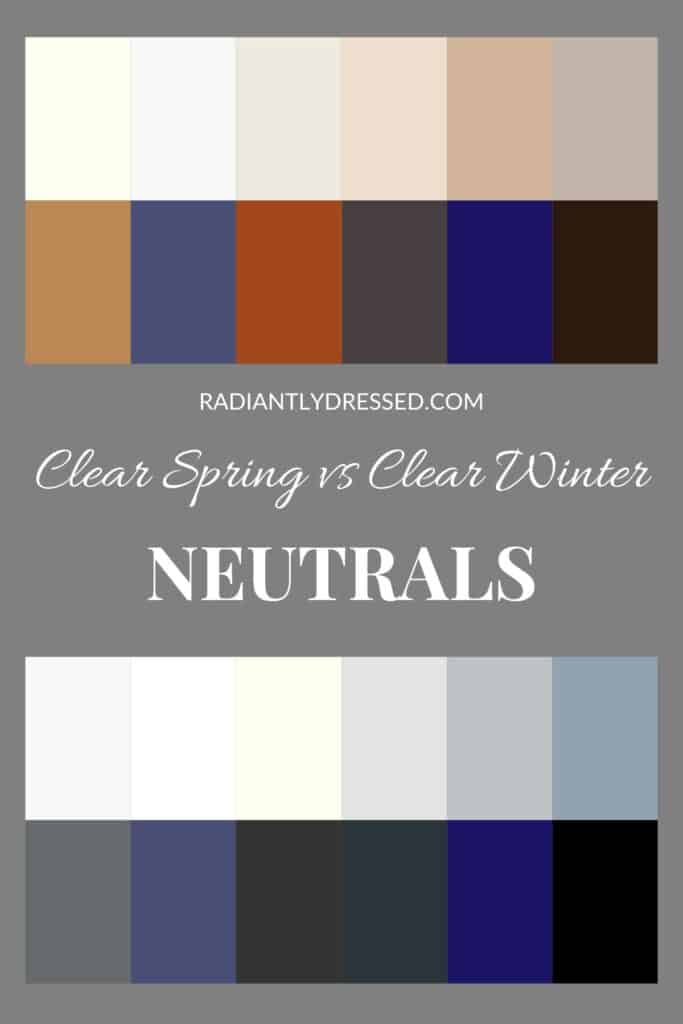
Spring and Winter Neutrals Neutrals
When trying to determine if you’re a Clear Spring or a Clear Winter, understanding how you interact with neutral colors is crucial. Clear Spring individuals do well when wearing the extreme versions of their neutrals, such as deep navy and ivory, rather than medium-range browns, which don’t harmonize with their high contrast levels. They thrive on the vibrancy these deeper or brighter neutrals provide, enhancing their natural coloring beautifully.
Clear Winters, meanwhile, perform best with gray based neutrals that are either very dark, like charcoal, or very light, such as light silver. They can also pull off pure black and white effortlessly, which complements their striking high contrast. This starkness in their neutrals aligns perfectly with Clear Winter’s bold and clear color preferences.
Exploring how both Clear Spring and Clear Winter handle their neutrals can illuminate which season aligns best with your coloring. If you find that medium grays and browns wash you out or dull your appearance, you may lean towards Clear Spring with its preference for brighter, darker shades like deep navy.
Conversely, if you shine in stark black, white, or the right shade of gray, then Clear Winter might be your true fit. Understanding these nuances in neutral colors is a practical way to discern your ideal seasonal alignment, ensuring your wardrobe enhances your natural beauty.
Color Test: Lime vs Emerald
The most effective method for determining whether Clear Spring or Clear Winter suits you better is what I like to call the lime green versus emerald green test. These two colors are crucial in distinguishing between the two seasons. If you’re uncertain, I suggest finding fabrics in lime green (a bright, vibrant green) and emerald green (a deep, rich green). Drape these fabrics around your face under natural light and take a photo using the back camera of your phone—avoid the selfie mode, as it can distort the results.
Observe the effects of each color on your appearance. For Clear Winters, lime green might introduce an unwanted yellow cast to your skin that can clash with your cool undertones, potentially highlighting skin imperfections and wrinkles. Conversely, for Clear Springs, emerald green can be equally unflattering; it might be too dark and overpowering, making your skin look drained and emphasizing blemishes and lines more starkly.
This test is focused on understanding how specific colors interact with your skin tone. If you’re torn between identifying as a Clear Spring or Clear Winter, there’s no need to test with a wide array of fabrics. Using lime green and emerald green should efficiently reveal which season enhances your natural coloring, providing clear guidance on your color analysis journey.
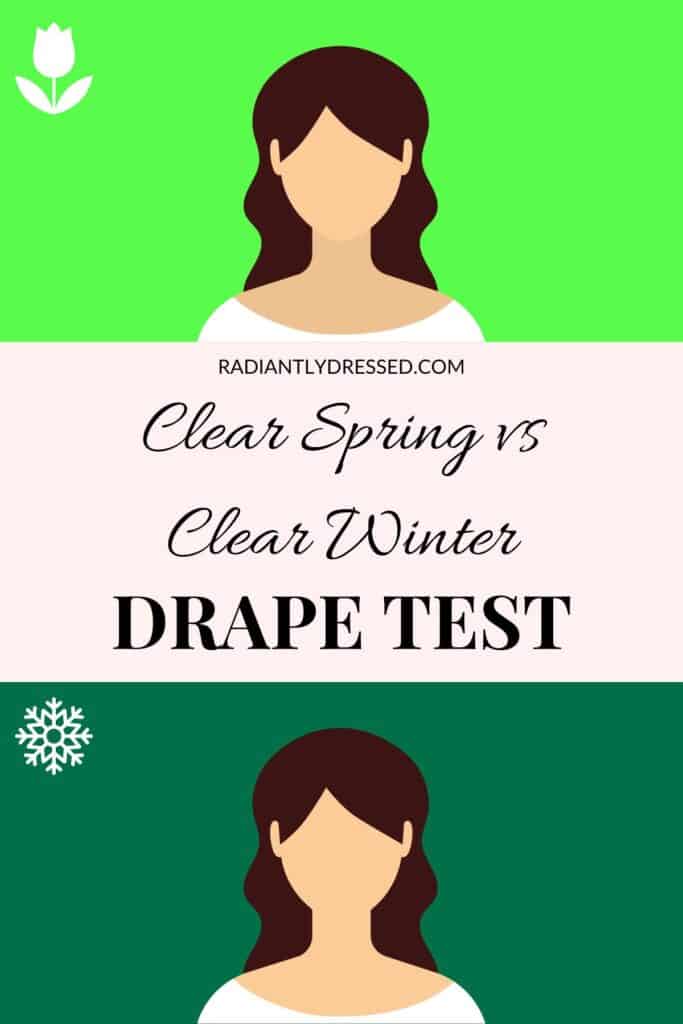
Determining Your Color Season
Finding your color season is all about matching your wardrobe and makeup to the natural colors of your hair, eyes, and skin. Knowing whether you’re a Clear Spring or Clear Winter can make a big difference, as each season has its own set of colors that work best with your natural looks.
DIY Color Analysis
To explore color season from the comfort of their home, my DIY Color Analysis Course is the perfect starting point. This course empowers you with the knowledge to:
- Utilize color theory to determine your color season.
- Use extra clues like personality and eye patterns to support your findings.
- Perform a step by step digital draping process to find your season.
- Create a wardrobe palette based on your best colors.
Transitioning to Professional Color Analysis
While the DIY course provides a solid foundation, transitioning to a professional color analysis can further refine your understanding of your color season.
A professional analysis offers:
- Expert Guidance: Benefit from an experienced eye that can discern subtleties in your coloring, leading to a more nuanced understanding of your season.
- Customized Palette Recommendations: Receive a personalized palette that includes detailed recommendations for clothing and makeup, ensuring every choice you make is in harmony with your natural beauty.
While there is a cost associated with professional color analysis, the investment is in yourself—yielding an individualized assessment that enhances your style, confidence, and the way you present yourself to the world.
Whether you begin with a DIY analysis or opt for a professional consultation, identifying your color season—Clear Spring or Clear Winter—is a key step in embracing your true self and highlighting your natural beauty through every outfit and makeup choice.
Tired of going round in circles trying to figure out your color season? Hack the same process used by professional color analysts to figure out your season from the comfort of your home, and stop feeling confused about color analysis with Personal Prism.
FAQ about the Bright Seasons
What is the main difference between Bright Spring and Bright Winter in color analysis?
Clear spring and winter are also referred to as bright spring and winter. The difference between these two seasons lies primarily in their variation in hue and value. Clear (or Bright) Spring is warm and medium-light in value, while Clear (Bright) Winter is cool and medium-dark in value.
Can certain hair colors suggest whether someone is a Clear Spring or Clear Winter?
No, hair color isn’t a strong factor in seasonal analysis. It is fairly common for Clear Spring to have blonde or brunette hair. Conversely, it is possible to Clear Winter to have red or blonde hair, although this is rare and less likely.
Can Clear Spring and Clear Winter wear similar colors?
While there is some overlap in the vibrancy and clarity of colors both seasons can wear, the specific shades differ significantly due to their undertones. Clear Spring looks best in warm, light, and bright colors, whereas Clear Winter thrives in cool, bold, and dark shades.
What should I do if colors typical of both Clear Spring and Clear Winter seem to suit me?
If you find that you can wear colors from both palettes well, you may have neutral features that can adapt to both warm and cool tones. It’s also possible you might be mistaking similar brightness levels for compatibility. For a more accurate assessment, consult with a professional color analyst who can offer a detailed evaluation under various lighting conditions.
Why do some colors look good on me but don’t seem to fit my season?
Color compatibility can extend beyond the prescribed palettes of your season, reflecting the unique variances in individual complexions. It’s crucial to prioritize confidence and personal affinity for colors, sometimes even stepping outside your season’s guidelines to embrace what truly resonates with you.
Is it necessary to stick strictly to my color season’s palette?
While your color season offers a guide to optimize your natural beauty, personal style and expression hold value. Experimenting with and incorporating colors outside your designated palette is a personal choice that can add depth and personality to your wardrobe.
How does knowing my color season benefit me?
Recognizing your color season simplifies wardrobe decisions, ensuring that your clothing choices consistently flatter your natural appearance. This knowledge not only boosts confidence but also streamlines shopping, aiding in the creation of a cohesive and versatile wardrobe.
Can my color season change over time?
While your skin’s undertone and the foundation of your color season remain constant, factors such as changes in hair color, lifestyle shifts, or evolving personal preferences can influence how you engage with your color season, possibly leading you to adapt your palette accordingly.
How do you determine what season you are in?
To determine your color season, you should assess your skin’s undertone, natural hair and eye color, and how certain colors affect your appearance. The process involves experimenting with different colored fabrics under natural light to see which shades make you look vibrant and healthy. Typically, warm undertones suggest Spring or Autumn seasons, while cool undertones suggest Summer or Winter. For a precise assessment, consider consulting a professional color analyst.
Final Thoughts on Clear Spring vs Clear Winter
As we wrap up our discussion on the vibrant palettes of Clear Spring and Clear Winter, you now have the necessary tools to identify your true color season. From assessing your skin’s undertones to determine if you lean toward cooler or warmer hues, to evaluating your personal contrast and intensity, and pinpointing the neutrals that best complement your look, we’ve covered crucial aspects.
Let’s not forget the lime green-emerald green test—your secret weapon in discovering whether Clear Spring’s lively warmth or Clear Winter’s crisp coolness suits you best.
This exploration was designed to highlight the differences between Clear Spring and Clear Winter, despite their shared preference for high-contrast colors. With these insights, I hope you feel prepared to confidently claim your season. Whether you’re drawn to the dynamic brightness of Clear Spring or the stark elegance of Clear Winter, step into your colors with assurance. Here’s to adopting your season’s palette with elegance and ensuring every outfit reflects your newfound color knowledge.
Related Color Analysis Articles
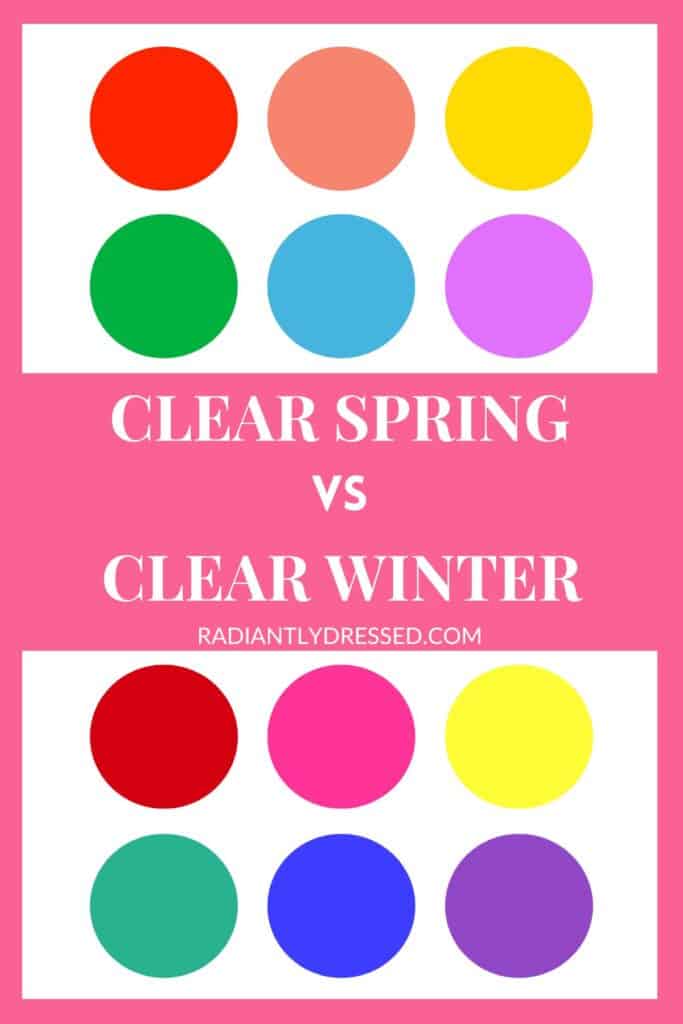
Clear Spring and Clear winter are distinguished by their variations in hue (warm/cool) and value (light or dark).
Stacey is the owner and creator behind Radiantly Dressed. She is a certified image consultant and AICI member focusing on creating simplicity in wardrobes via color and style.

